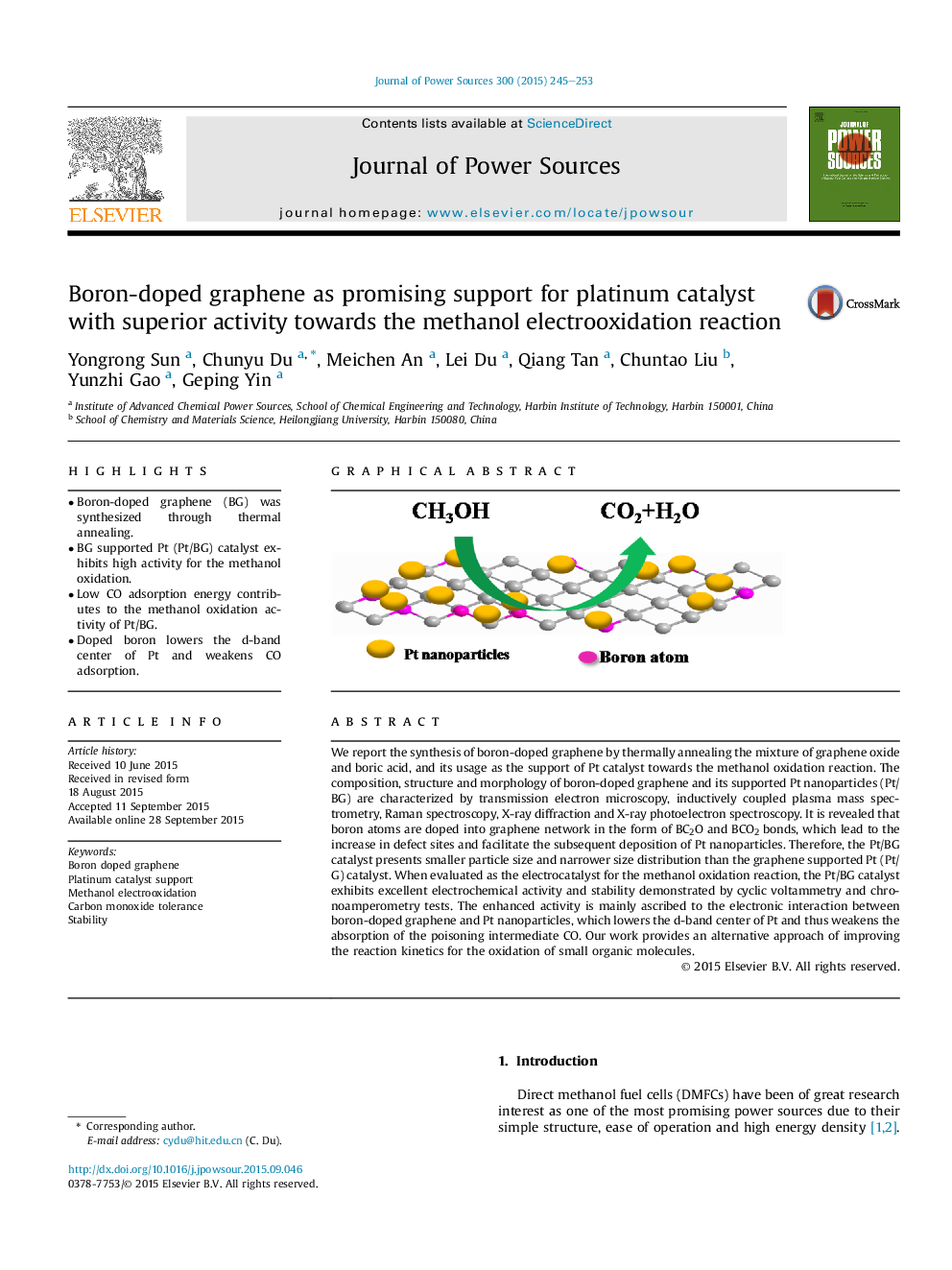| Article ID | Journal | Published Year | Pages | File Type |
|---|---|---|---|---|
| 1285776 | Journal of Power Sources | 2015 | 9 Pages |
•Boron-doped graphene (BG) was synthesized through thermal annealing.•BG supported Pt (Pt/BG) catalyst exhibits high activity for the methanol oxidation.•Low CO adsorption energy contributes to the methanol oxidation activity of Pt/BG.•Doped boron lowers the d-band center of Pt and weakens CO adsorption.
We report the synthesis of boron-doped graphene by thermally annealing the mixture of graphene oxide and boric acid, and its usage as the support of Pt catalyst towards the methanol oxidation reaction. The composition, structure and morphology of boron-doped graphene and its supported Pt nanoparticles (Pt/BG) are characterized by transmission electron microscopy, inductively coupled plasma mass spectrometry, Raman spectroscopy, X-ray diffraction and X-ray photoelectron spectroscopy. It is revealed that boron atoms are doped into graphene network in the form of BC2O and BCO2 bonds, which lead to the increase in defect sites and facilitate the subsequent deposition of Pt nanoparticles. Therefore, the Pt/BG catalyst presents smaller particle size and narrower size distribution than the graphene supported Pt (Pt/G) catalyst. When evaluated as the electrocatalyst for the methanol oxidation reaction, the Pt/BG catalyst exhibits excellent electrochemical activity and stability demonstrated by cyclic voltammetry and chronoamperometry tests. The enhanced activity is mainly ascribed to the electronic interaction between boron-doped graphene and Pt nanoparticles, which lowers the d-band center of Pt and thus weakens the absorption of the poisoning intermediate CO. Our work provides an alternative approach of improving the reaction kinetics for the oxidation of small organic molecules.
Graphical abstractFigure optionsDownload full-size imageDownload as PowerPoint slide
